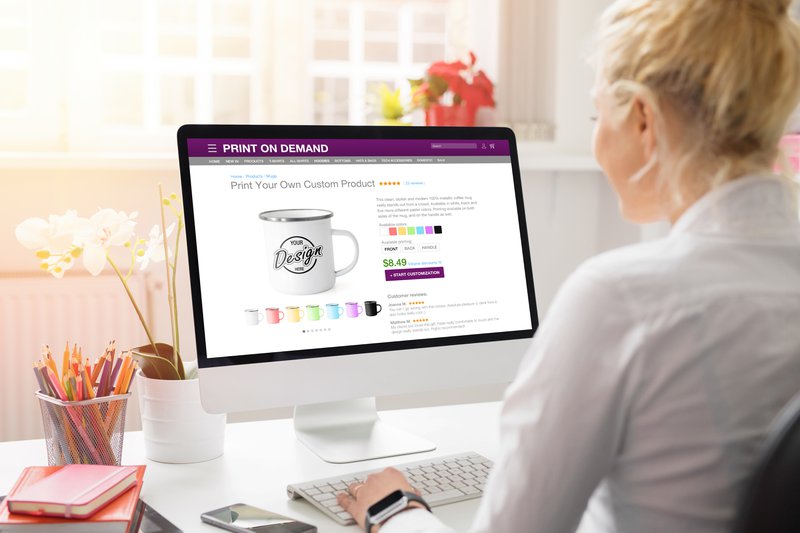A robust and adaptable digital commerce strategy is crucial for businesses to thrive in the competitive online marketplace. When it comes to building and managing eCommerce platforms, there are various approaches to consider. Each offers unique advantages and considerations, and understanding their differences is essential to maximize the potential of online sales.
Whether you’re migrating from an existing platform or starting from scratch, this guide will help you choose and design a digital commerce strategy that aligns with your business goals. Specifically, we provide an overview of full-stack, headless, and composable digital commerce.
We’ll also explore key considerations to help you navigate the complexities of digital commerce migration and replatforming.
Full-Stack vs Headless vs Composable Commerce: How Does It Work?
The terms “full-stack,” “headless,” and “composable” commerce refer to the different approaches used to build and manage eCommerce platforms. Full-stack commerce uses a single platform to provide end-to-end capabilities to run an online store. The all-in-one solution integrates both the front- and back-end components into a single platform. It can manage products, process payments, and handle orders within a single hub.
A full-stack digital commerce approach offers simplicity and ease of use. However, it may limit customization and lacks the flexibility to adapt to rapidly changing business needs.
Headless commerce decouples the front-end presentation layer (where the customer interacts with the store) from the back-end commerce functionality (like inventory management and payment processing). This separation allows for more flexibility and customization in designing the customer experience. Businesses can create unique and engaging storefronts and still maintain the core commerce functionality behind the scenes.

Composable commerce takes the modular approach a step further and breaks down eCommerce functionality into individual, interchangeable components. These can be mixed and matched to create a custom solution tailored to specific business needs. This approach offers even greater flexibility and scalability. Businesses can adapt quickly to market demands and changing trends.
Each approach has benefits and drawbacks. It all depends on the complexity of your digital commerce requirements and the level of customization you desire.
Which Digital Commerce Approach Should I Use for My Migration?
Choosing the right digital commerce approach for your migration is crucial to ensure a successful transition. Your choice will also significantly affect the ability to reach your business goals, enhance customer experiences, and drive growth.
Full-Stack Development for eCommerce
With both front- and back-end integration in full-stack development, eCommerce businesses can create a feature-rich, customizable, and scalable online store. This approach combines the user-facing design elements with the underlying business logic and data management. As a result, full-stack digital commerce systems offer a seamless and intuitive customer journey.
Full-stack development has numerous advantages, such as:
- Efficient Development: Developers can work on both the front and back end of an eCommerce platform simultaneously, which streamlines the development process. Such efficiency enables you to deploy new features and updates faster.
- Integrated Solution: These platforms typically offer all-in-one solutions that include features for product management, order processing, and payment gateways. This integration simplifies operations and reduces the need to manage multiple systems.
- Scalability: Full-stack development provides a scalable architecture that can grow with the business. Whether it’s increased traffic during peak seasons or expanded product offerings, a well-designed full-stack eCommerce platform can accommodate growth without compromising performance.
- Maintenance and Support: Having a single team responsible for both front- and back-end development can make maintenance and support more efficient. This integrated approach resolves issues quicker, improves security, and offers smooth ongoing maintenance of the eCommerce platform.
Full-stack development has numerous benefits. But with this approach, businesses are often tied to a single platform or technology stack. This lack of flexibility can limit your ability to adapt to changing market trends or integrate with new tools and services.
Full-Stack to Headless Commerce
eCommerce companies best suited for headless architecture are content-focused and mobile-first. They also prioritize an omnichannel strategy and emphasize immersive digital experiences.
Sound familiar? If your brand operates on a conventional eCommerce platform, transitioning to headless architecture can help modernize your content marketing. It can also enhance the customer experience without the need for a complete overhaul.
Headless architecture separates back- and front-end components so they can function independently but communicate through application programming interface (API) calls. When built with a microservices approach, back-end functions are also separated from each other. APIs again facilitate communication, so eCommerce services can be activated independently. This means you can easily migrate in stages.
With APIs at their core, headless digital commerce platforms can integrate additional services but still stay compatible with existing ones.

Keep in mind that switching to a headless approach will require teams to adjust how they collaborate. In traditional monolithic platforms, developers handle all change requests. But headless systems empower marketing teams to make changes directly in the content management system (CMS) or page editor quickly and without coding. This speeds up marketing decisions and lets developers focus on optimizing back-end changes for faster site speeds and better digital experiences.
Full-Stack to Composable Commerce
Composable commerce allows businesses to choose top eCommerce modules from different vendors, then integrate them with APIs to create a custom application. These modules are known as packaged business capabilities (PBCs). They’re pre-built software components with specific functions like product management and payment processing. By combining PBCs, businesses can avoid being tied to one vendor’s platform. This enables greater customization and agility than traditional platforms.
Since PBCs are pre-built, ready-to-use components, you can save time in development. That is, concentrate on innovation rather than creating functionalities from the ground up. You can quickly bring new ideas to market by replacing PBCs without disrupting the system.
Through modular architecture and API interoperability, you can integrate with emerging services. This ensures your eCommerce infrastructure remains current, flexible, and scalable.
Moving to composable commerce involves a few key steps:
- Analyze your current technology stack.
- Clearly define your transition goals and the gaps you need to fill.
- Compile a comprehensive list of necessary PBCs.
- Assess each PBC’s features to confirm it meets your specific needs.
- Tailor PBCs to match your brand identity, user experience preferences, and operational requirements.
- Specify the data transfer process between PBCs. Map data fields and set up synchronization procedures before you implement the integration plan.
While composable digital commerce has many benefits, these platforms are a lot more complex to manage and can become costly.
Considerations for Your Digital Commerce Migration
When choosing a digital commerce approach for your migration, there are several important considerations to keep in mind. The following factors can greatly impact the success and effectiveness of your digital commerce strategy.
Utilizing Cloud Hosting and CDNs
To enhance the performance and scalability of your digital commerce platform, consider leveraging cloud hosting and content delivery networks (CDNs). Cloud hosting can offer the flexibility and reliability you need to handle increased traffic and ensure smooth operations during peak periods. It also provides an easy and efficient data backup solution.
CDNs help deliver content quickly and efficiently to users across the globe, reducing latency and improving the overall customer experience. With cloud hosting and CDNs, you can ensure your digital commerce platform is fast, reliable, scalable, and accessible to customers worldwide.
Data and Architecture Mapping
Data mapping serves as the foundation for transferring data seamlessly from one platform to another. It aligns the data elements from the source system to the corresponding fields in the target system to ensure accuracy and consistency. It’s important to understand the architecture of both your current system and the new solution. This will help identify any potential roadblocks or challenges that may arise during the migration process.

Data and architecture mapping requires you to:
- Conduct a thorough assessment of your current system, including data structures, processes, integrations, and dependencies.
- Analyze the architecture of both your current system and the new digital commerce solution to identify how components and functionalities align or differ.
- Map out how data flows between different system modules, databases, APIs, and external services.
- Identify the key data points that need to be migrated.
- Establish a clear mapping strategy that outlines how data from your current system will be transferred to the new platform.
Before migrating data, define data formats, fields, relationships, and any transformations that are necessary to ensure the two systems are compatible. Conduct data cleansing activities to be sure the information is accurate, consistent, and up to date. This may involve the de-duplication, standardization, and validation of data to improve data quality.
Conduct thorough testing and validate your data mapping and architecture prior to fully transitioning to the new platform. Test data migration processes, system integrations, and functionality to identify and address any issues or discrepancies.
Transitioning Core Functionality
Planning the migration of critical functions like payment processing and inventory management is crucial to maintain business continuity during the transition. These functions directly impact the customer experience and business operations. So, it’s important to prioritize them during the transition.
First, identify all critical functions and assess the integration options available between your current eCommerce platform and the new one. Find the specific data elements that need to be migrated, such as payment transaction history and inventory levels. Develop a data migration strategy and determine the process for moving this data accurately.
Consider running parallel operations during the transition phase. That is, you would operate both the old and new digital commerce platforms for a certain period. This enables you to validate the accuracy of payment processing and inventory management in the new system but still maintain business continuity.
Again, it’s key to test all the functionalities in the new platform to ensure all business and payment processes work as expected. Before you go live, train your staff members on the new management systems. This will help you minimize any disruptions caused by the change.
Make Informed Decisions for Your Digital Commerce Strategy
Full-stack, headless, or composable commerce solution? Understand the advantages and drawbacks of each approach to make informed decisions that align with your business goals.
It’s essential to evaluate the complexities and distinctions of various platform approaches. You can then create a digital commerce strategy that enhances customer experiences, drives growth, and adapts to evolving market demands.
Zobrist’s complimentary assessment of your upcoming migration can provide valuable insights and guidance. This will ensure a smooth transition to your new digital commerce platform.
With Zobrist’s advanced eCommerce features and data-driven insights, you’ll captivate and influence customers and drive higher conversion rates, productivity, and cost savings. Don’t miss out on this opportunity to elevate your digital commerce strategy and stay ahead in a competitive market. Let’s connect.

